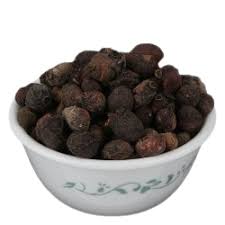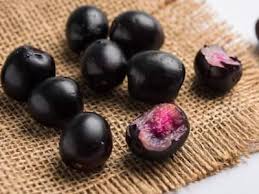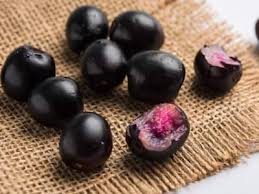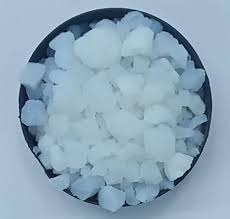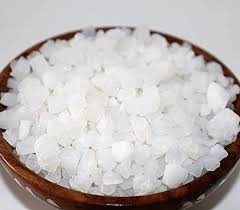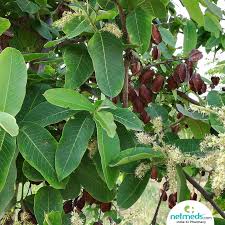
Why Amla is an Essential Part of Ayurvedic Medicine
Ayurveda, the ancient Indian system of natural healing, has withstood the test of time for over 5,000 years. One of its most celebrated and powerful ingredients is Amla, also known as Indian Gooseberry. Deeply rooted in Ayurvedic philosophy, Amla is considered a Rasayana — a rejuvenating herb that enhances longevity, improves immunity, and balances the body’s three doshas: Vata, Pitta, and Kapha.
At Dirghaanshi, our mission is to bring ancient wisdom into modern wellness. Amla represents the very essence of Ayurveda — holistic, healing, and deeply nourishing. This article explores why Amla is an irreplaceable part of Ayurvedic medicine, its therapeutic properties, and how it promotes complete physical, mental, and spiritual health.
Long Description: The Role and Importance of Amla in Ayurvedic Medicine
✅ 1. Amla as a Rasayana in Ayurveda
In Ayurveda, Rasayanas are herbs and formulations that rejuvenate the body, improve longevity, and delay aging. Amla holds the highest place among Rasayana herbs.
Key Benefits:
Rejuvenates body tissues
Delays the signs of aging
Improves energy, strength, and vitality
Enhances cellular regeneration
Conclusion: Amla supports long-term health and is essential for those seeking preventive and restorative wellness.
✅ 2. Tridosha Balancing: Vata, Pitta, and Kapha
Amla is one of the rare herbs that balances all three doshas. Its cooling, astringent, and slightly sweet nature helps calm Pitta, nourish Vata, and regulate Kapha.
Key Benefits:
Soothes acidity and heat (Pitta)
Improves digestion and nerve health (Vata)
Reduces heaviness and congestion (Kapha)
Conclusion: Amla’s tridoshic effect makes it suitable for all body types and seasons.
✅ 3. Amla for Digestive Health (Agni)
In Ayurveda, Agni or digestive fire is the foundation of health. Amla supports Agni without aggravating Pitta, making it ideal for improving digestion, nutrient absorption, and gut balance.
Key Benefits:
Enhances metabolism
Reduces acidity and indigestion
Promotes healthy gut flora
Conclusion: Amla maintains digestive health — the root of Ayurvedic healing.
✅ 4. Immunity Booster (Ojas Enhancer)
Ojas is considered the essence of immune strength and vitality in Ayurveda. Amla strengthens Ojas through its high Vitamin C content, antioxidants, and rejuvenating properties.
Key Benefits:
Protects against seasonal flu, infections
Supports white blood cell production
Boosts overall resistance to diseases
Conclusion: Amla builds immunity from within, making it a daily tonic in Ayurvedic practice.
✅ 5. Amla in Ayurvedic Formulations
Amla is a core ingredient in many classical Ayurvedic formulations such as:
Triphala: A digestive and detoxifying blend with Haritaki and Bibhitaki
Chyawanprash: A rejuvenative herbal jam for energy and respiratory strength
Nellikai Lehyam: A traditional tonic in South India
Brahma Rasayana: A nerve and brain tonic
Conclusion: The versatility of Amla is proven through its presence in dozens of revered Ayurvedic medicines.
✅ 6. Powerful Antioxidant Properties
Amla contains potent antioxidants such as ascorbic acid (Vitamin C), gallic acid, ellagic acid, and flavonoids. These neutralize free radicals and protect tissues from oxidative stress.
Key Benefits:
Prevents cellular aging
Reduces oxidative damage
Enhances skin and hair health
Conclusion: Amla protects the body at the cellular level — a cornerstone of Ayurvedic anti-aging therapy.
✅ 7. Blood Purification and Liver Support
Amla acts as a natural blood purifier and liver detoxifier, both of which are critical in Ayurveda for maintaining radiant skin, mental clarity, and clean digestion.
Key Benefits:
Flushes out toxins
Improves liver enzyme activity
Clears the blood and supports glowing skin
Conclusion: Amla plays a vital role in Ayurvedic detox practices (Shodhana).
✅ 8. Amla for Mental Clarity and Brain Health
Ayurveda recognizes the mind-body connection. Amla enhances Medhya (intellect-promoting) qualities and calms the mind.
Key Benefits:
Improves memory and focus
Reduces stress and anxiety
Nourishes the nervous system
Conclusion: Amla strengthens both cognitive and emotional well-being.
✅ 9. Skin and Hair Benefits in Ayurvedic Beauty
Amla is used in Ayurvedic skincare and haircare due to its anti-aging, anti-pigmentation, and hair-nourishing properties.
Key Benefits:
Prevents premature graying
Strengthens hair roots
Clears acne, pigmentation, and skin dullness
Conclusion: Amla is a key herb in Ayurvedic beauty (Saundarya) practices.
✅ 10. Amla’s Role in Daily Dinacharya and Ritucharya
In Ayurveda, Dinacharya (daily routine) and Ritucharya (seasonal routine) are essential practices. Amla fits perfectly into both due to its:
Cooling nature (ideal for summer and Pitta balance)
Immunity-boosting in monsoon and winter
Tonic effect throughout the year
Conclusion: Amla is a flexible herbal ally that supports health year-round.
How to Include Amla in Daily Life According to Ayurveda
- Amla Juice
Take 20–30 ml on an empty stomach.
Boosts digestion, liver health, and immunity.
- Amla Powder (Churna)
Mix 1 teaspoon with warm water or honey.
Taken in the morning or before bed.
- Chyawanprash
1–2 teaspoons daily with warm milk.
Especially useful for respiratory and immune strength.
- Amla Capsules or Tablets
Easy to include in your herbal supplement routine.
Standardized dosage ensures consistency.
- Amla Hair and Skin Products
Use Amla-infused oils and face packs.
Promotes beauty from the outside in.
Why Amla is Called the “Divya Aushadhi” in Ayurveda
Amla is often referred to as Divya Aushadhi, meaning “divine medicine”, in classical texts. This is because:
It benefits all seven dhatus (body tissues)
It strengthens ojas, tejas, and prana — the three subtle energies of vitality
It is suitable for all ages and constitutions
It balances all three doshas without side effects
These qualities make Amla unique and irreplaceable in the Ayurvedic healing system.
Scientific Backing of Amla in Modern Research
Amla has shown hypoglycemic, antioxidant, hepatoprotective, and anti-inflammatory properties in multiple clinical studies.
Its high bioavailability of Vitamin C supports modern immune and anti-aging therapies.
It is being studied for its role in preventing chronic diseases like diabetes, heart disease, and cancer.
This scientific validation continues to align with ancient Ayurvedic wisdom.
Conclusion
Amla is more than just a fruit — it is a holistic healer that forms the backbone of many Ayurvedic treatments. Its unmatched versatility, from balancing doshas to nourishing skin and boosting immunity, has earned it a sacred place in Ayurvedic medicine.
At Dirghaanshi, we believe in reconnecting with nature’s pharmacy. Amla is one of those timeless gifts from Ayurveda that can transform your health when used consistently and mindfully. Whether you’re looking to rejuvenate your body, sharpen your mind, or glow from within — Amla is the answer.


